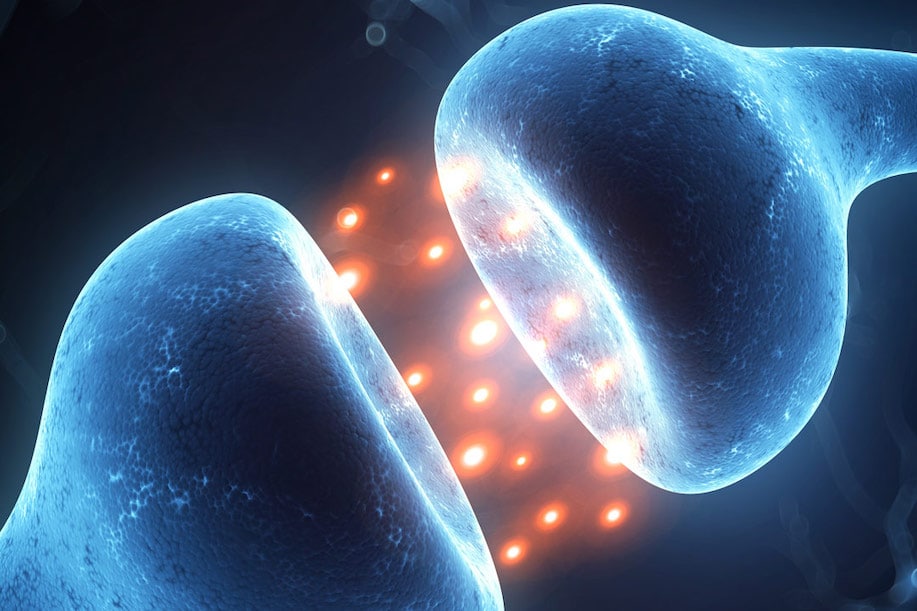
Cannabinoids are a class of chemicals derived from the Cannabis & hemp plant that interact with cannabinoid receptors in the body. There are dozens of cannabinoids, but the two most well-known are THC and CBD. Cannabinoid receptors are found all over the body, and they play a role in many different physiological processes. In this blog post, we will explore the endocannabinoid system and cannabinoid chemistry in depth. We will discuss how cannabinoids work and what they can be used for. Stay tuned for more information this year on this fascinating topic!
The endocannabinoid system (ECS) is a network of cannabinoid receptors and endogenous cannabinoids that play a role in many physiological processes. The ECS is involved in the regulation of mood, pain, appetite, inflammation, and other processes. Cannabinoid receptors are found in the brain, nervous system, immune system, and throughout the body. There are two main types of cannabinoid receptors, CB₁ and CB₂. CB₁ receptors are found primarily in the brain and nervous system, while CB₂ receptors are found in the immune system. The ECS within the human body should not be confused with our CBD brand ECS®! The name just stuck… Click here to view the product range.
Endocannabinoids are endogenous cannabinoids that bind to cannabinoid receptors and modulate their activity. The two most well-known cannabinoids which interact with the brain’s cannabinoid receptors are THC & CBD. Other major-minor cannabinoids include CBG, CBC, CBN, THCV & CBDV. Most of these cannabinoids have been shown to interact with both cannabinoid receptors (CB₁ & CB₂) however they tend to have a preference for one over the other. For example, THC is known to preferentially bind to CB₁ receptors while THC is the cannabinoid responsible for the psychoactive effects of cannabis. CBD does not have any psychoactive effects, and it counteracts the psychoactive effects of THC. CBD is being studied for its potential therapeutic benefits.
Cannabinoid chemistry is very complex, and scientists are still learning a lot about how cannabinoids interact with the body. However, we do know that cannabinoid receptors are found throughout the body and play a role in many different physiological processes. The human endocannabinoid system plays an important role in maintaining homeostasis in the body. Homeostasis is the maintenance of a stable internal environment despite changes in the external environment. The endocannabinoid system helps to regulate mood, pain, appetite, inflammation, and other processes. More research is needed to fully understand the potential therapeutic benefits of cannabinoids. However, we are hopeful that cannabinoid-based therapies will one day be used to treat a variety of medical conditions globally without some of the restrictions which currently limit access to Medical Cannabis.
Cannabinoids found in the Cannabis plant, such as THC and CBD, can interact with cannabinoid receptors in the body to produce various effects. More research is needed to fully understand cannabinoid chemistry and how it can be used to treat various conditions. However, the potential therapeutic benefits of cannabinoids are very promising.
Interestingly the human body contains natural cannabinoids, known as endocannabinoids. These endocannabinoids are similar in structure to the cannabinoids found in the Cannabis plant. The body produces these cannabinoid molecules to help modulate various physiological processes. Infants who breastfeed receive cannabinoid molecules through their mother’s milk which help to develop their immune system and protect them from infection. Some believe that Cannabis was put on our planet by either God or aliens because cannabinoid receptors are found in all forms of life! Whatever you believe it’s hard to deny that the powers of this amazing plant are meant to be utilized by the human race.
Cannabinoids interact with our cannabinoid receptors to produce various effects & physiological changes. The endocannabinoid system is involved in regulating mood, pain, appetite, inflammation, and other processes. Cannabinoid receptors are found throughout the body, and they play a vital role in our health. Here are some of the places you will find cannabinoid receptors in your body:
– The brain
– The nervous system
– The immune system
– The gastrointestinal tract
– Skin cells
Cannabinoid receptors are also found in other animals, plants, and even insects!
Cannabinoid receptors are part of a larger family of receptors known as G protein-coupled receptors (GPCRs). GPCRs are the largest class of receptors in the human body, and they are involved in a variety of physiological processes. cannabinoid receptors are found in all mammals.
Cannabinoids are a fascinating class of chemicals, and we are just beginning to scratch the surface of all that they can do. Stay tuned for more information on cannabinoid chemistry and the endocannabinoid system in our blog this year.
Please note: This blog post reflects historical data predating recent changes in cannabinoid laws, medical cannabis regulations, and some of our best CBD product names, strengths, and formulations. These historical blogs remain as a reference post our website update, but they might contain outdated information. Discover our updated CBD and legal cannabinoid products for the best CBD experience.